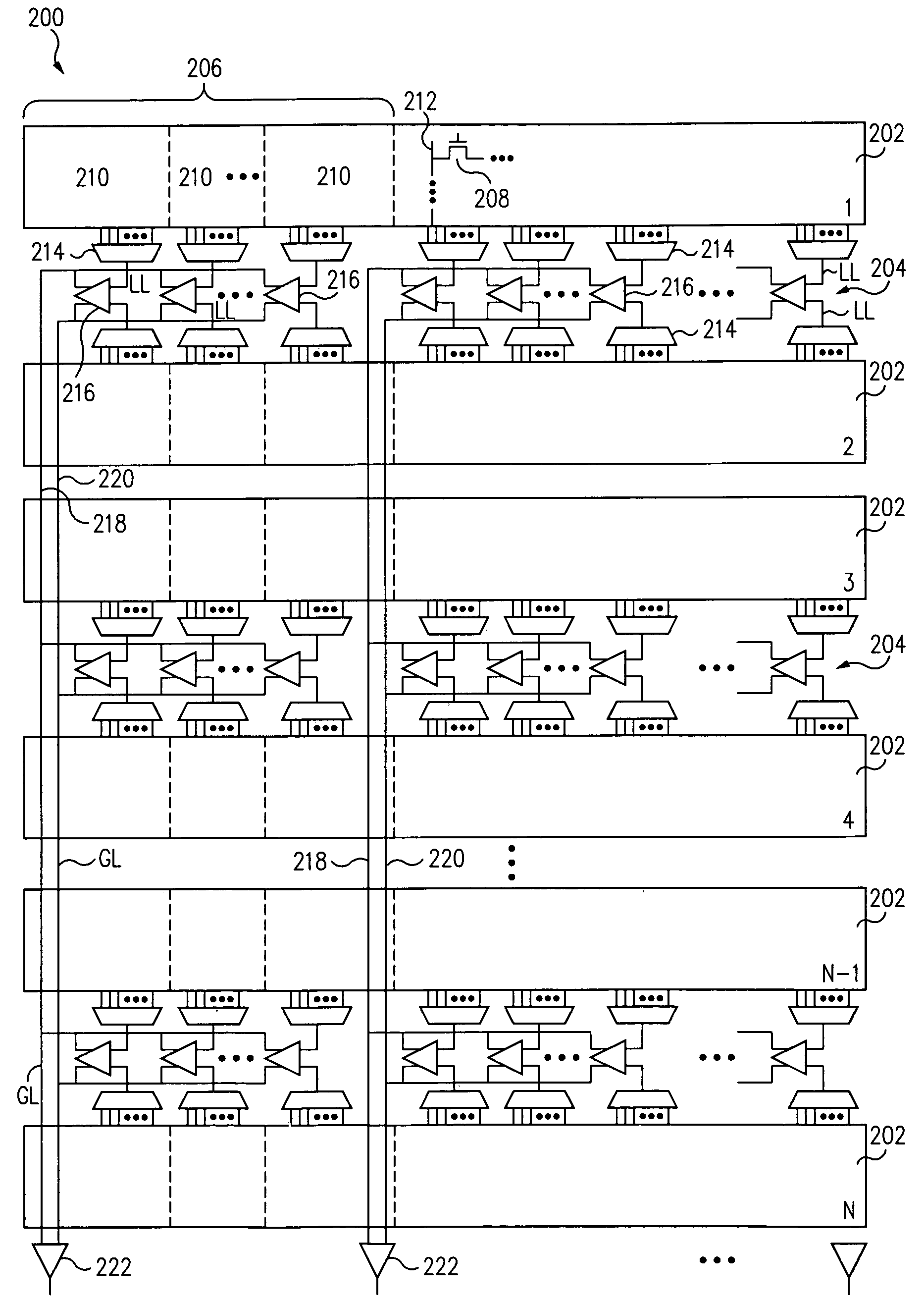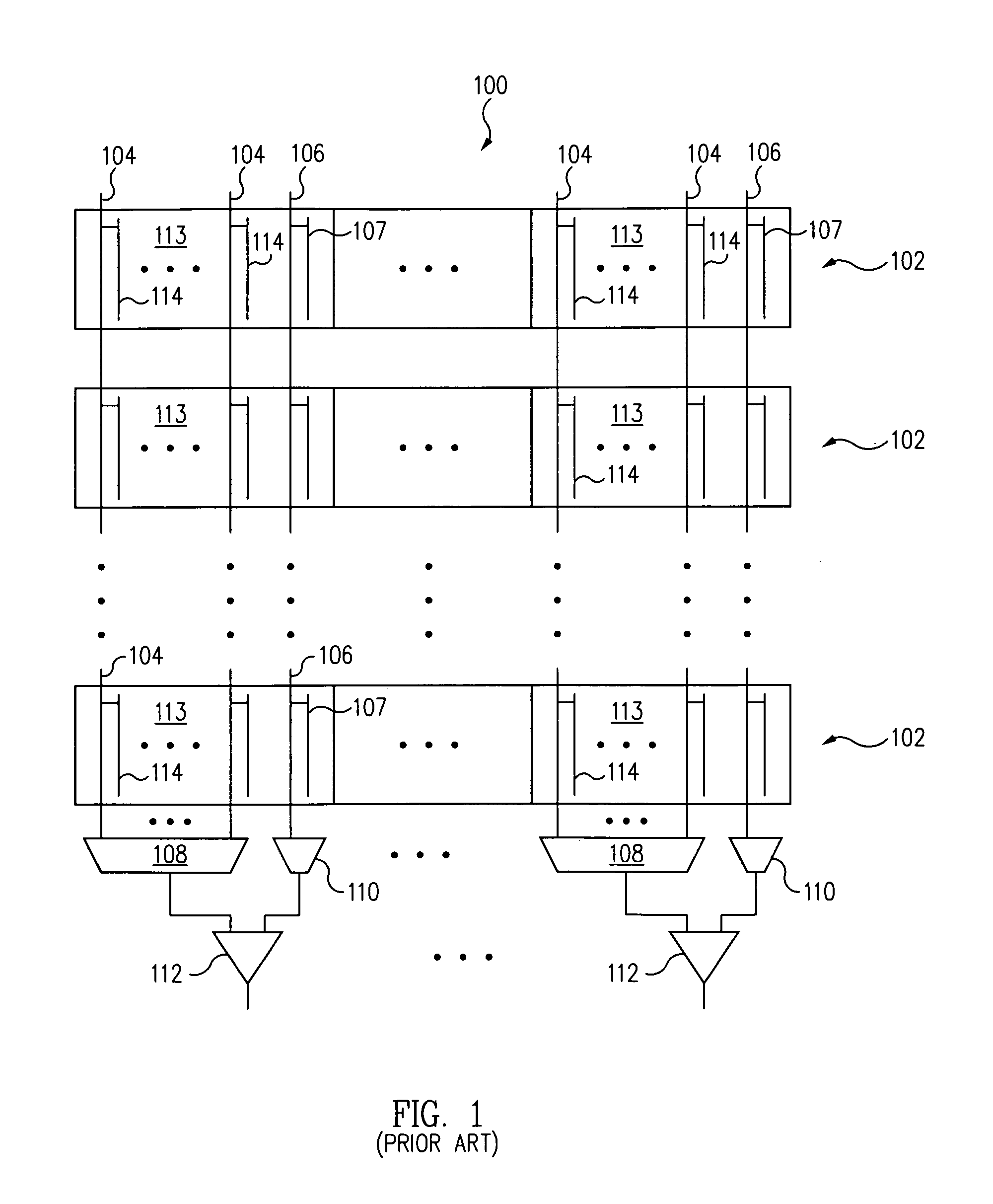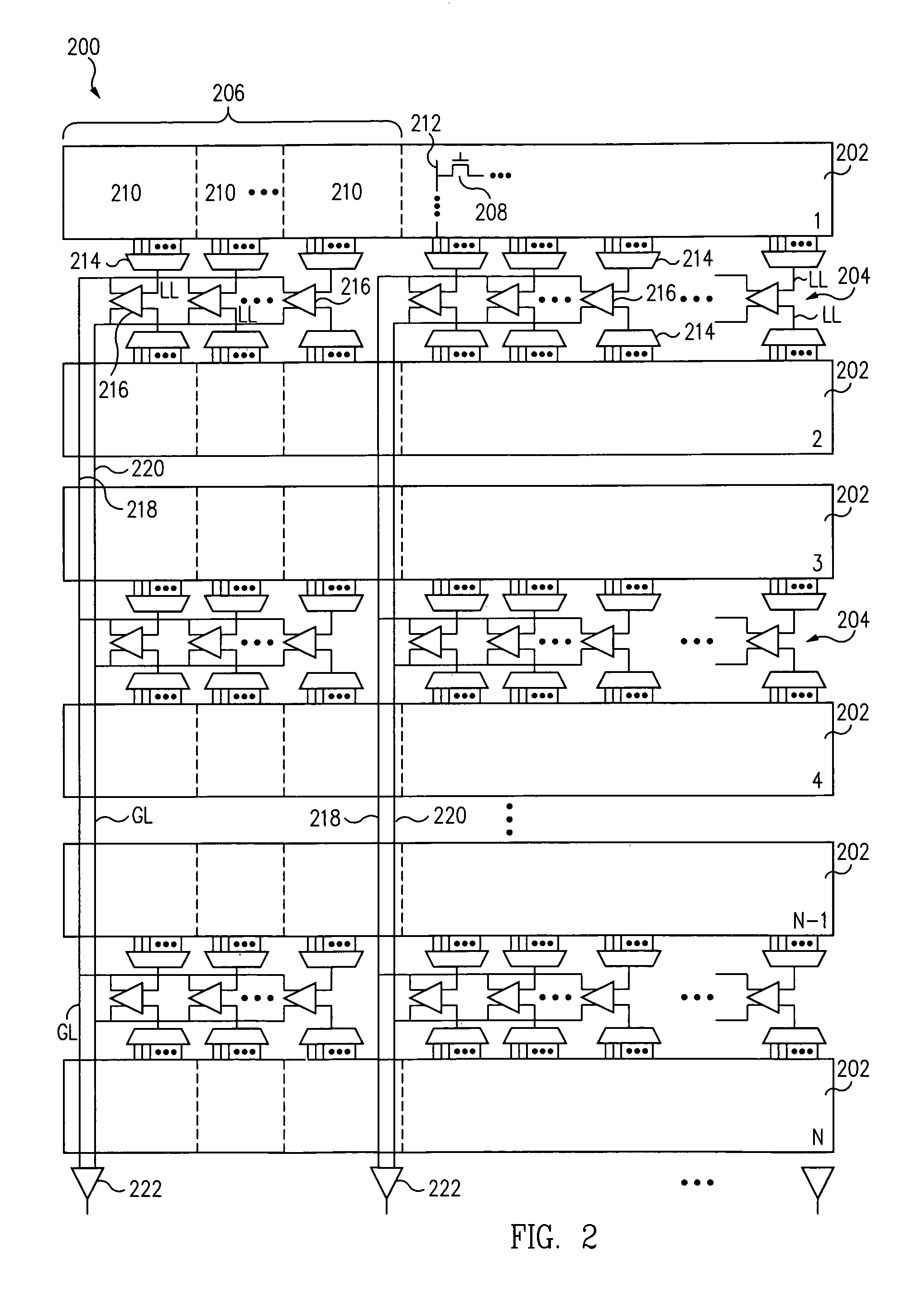Non-volatile memory architecture to improve read performance
a non-volatile memory and read performance technology, applied in static storage, digital storage, instruments, etc., can solve the problems of increasing signal development time, parasitic capacitances, and large array sizes, and achieve the effect of improving read performan
- Summary
- Abstract
- Description
- Claims
- Application Information
AI Technical Summary
Benefits of technology
Problems solved by technology
Method used
Image
Examples
Embodiment Construction
[0023]According to one aspect of the present invention, a memory cell array is physically divided into an even number of sectors, with each pair of sectors having local read circuitry comprising local sense amplifiers and multiplexers. Each sector is divided into groups of memory cells, with each group further divided into sub-groups of memory cells. Each sub-group is associated with a multiplexer and a local sense amplifier, with the sense amplifier being shared with another sub-group from a corresponding sector. A global sense amplifier is associated with each group of memory cells and local sense amplifiers. The local sense amplifiers sense local data lines within the sectors, while the global sense amplifiers sense global data lines associated with each group of memory cells. Thus, a two-stage sensing scheme is employed.
[0024]The present invention also takes advantage of physical space outside the memory array. Consequently, the transistor size of local sense amplifiers can be p...
PUM
 Login to View More
Login to View More Abstract
Description
Claims
Application Information
 Login to View More
Login to View More - R&D
- Intellectual Property
- Life Sciences
- Materials
- Tech Scout
- Unparalleled Data Quality
- Higher Quality Content
- 60% Fewer Hallucinations
Browse by: Latest US Patents, China's latest patents, Technical Efficacy Thesaurus, Application Domain, Technology Topic, Popular Technical Reports.
© 2025 PatSnap. All rights reserved.Legal|Privacy policy|Modern Slavery Act Transparency Statement|Sitemap|About US| Contact US: help@patsnap.com



